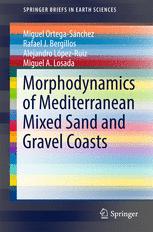

Most ebook files are in PDF format, so you can easily read them using various software such as Foxit Reader or directly on the Google Chrome browser.
Some ebook files are released by publishers in other formats such as .awz, .mobi, .epub, .fb2, etc. You may need to install specific software to read these formats on mobile/PC, such as Calibre.
Please read the tutorial at this link: https://ebookbell.com/faq
We offer FREE conversion to the popular formats you request; however, this may take some time. Therefore, right after payment, please email us, and we will try to provide the service as quickly as possible.
For some exceptional file formats or broken links (if any), please refrain from opening any disputes. Instead, email us first, and we will try to assist within a maximum of 6 hours.
EbookBell Team

4.7
76 reviewsThis book describes recent advances in the morphodynamics of mixed sand and gravel Mediterranean coasts, and provides updates and new methods for their study and management. It assesses how the differences in the geomorphic setting, in comparison with traditional sandy beaches, result in distinctive physical processes governing the dynamics of these coasts. Further, on the basis of field measurements, theoretical analysis and numerical modeling carried out at two study sites in southern Spain over the last 15 years, the book studies, analyzes and compares these physical processes and mechanisms. It also shows that the narrow and complex bathymetries and inner shelves modify the wave propagation patterns and hence, the longshore sediment transport gradients along the coast. Given the correlation between the changes in these gradients and the shoreline evolution over time, it identifies the complexity of the inner shelf bathymetries as the main driver of coastal changes and describes these processes in detail using, in the plan view, the inter-annual evolution of unaltered and “altered by human” beaches. Lastly, the book details how the generation and subsequent overlapping of berms across the beach profile are responsible for the sediment variability at depth and cross-shore, and concludes that the total run-up (including the water-level) is a more influential variable than wave height in the erosional/depositional response of these beaches.